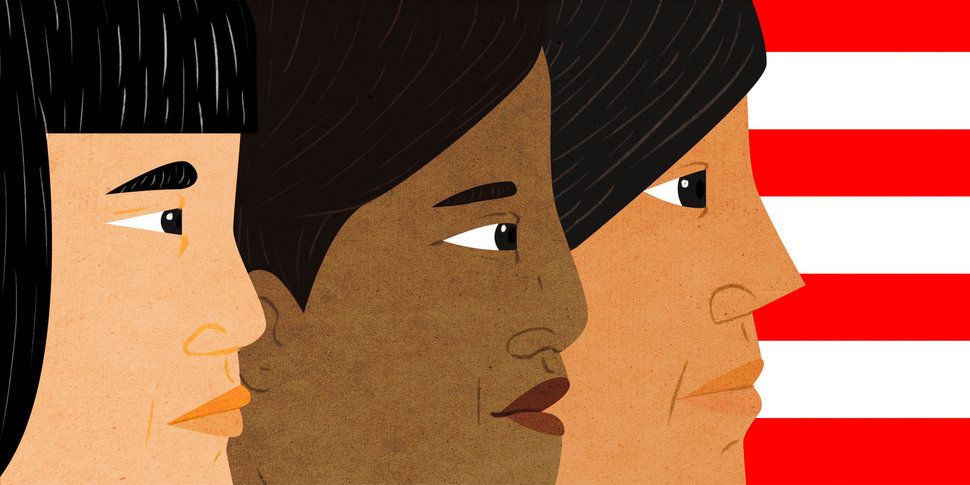[This article was originally published on June 29, 2018, at The Warden Post in the wake of Alexandria Ocasio Cortez's election to the United States Congress.]
In what has most certainly become the biggest political upset before the 2018 Midterm elections in the United states, 28-year-old self- proclaimed “Democratic Socialist” and former waitress Alexandria Ocasio-Cortez has defeated incumbent Congressman Joseph Crowley in the Democratic primary in New York’s 14th District as of June 26, 2018.
The election came as a shock to not only the mainstream media but to the Democratic establishment as well. The ever-eloquent Gregory Hood, writing for American Renaissance, states the following:
Miss Ocasio-Cortez ran on a hard-left platform of universal Medicare, abolishing ICE, free college tuition, and a federal universal jobs program. More importantly, she framed her candidacy as a generational and racial changing of the guard. Her campaign posters were bilingual; her ads could be seen as a thinly veiled appeal to racial pride. Her slogan was: “It’s time for one of us.”
Congressman Crowley had held the seat in New York’s 14th District since 2013 and was one of President Donald Trump’s biggest detractors and one of the harshest critics of the President’s proposed border wall with Mexico. However, such virtue signaling on the part of a pale, doughy Irish-American to the mass of mestizos and indios that make up the perpetual helot class of America’s rough underbelly apparently did him no good in the end.
While once held up as a possible successor to Nancy Pelosi, Crowley was reduced to a sniveling mess in the wake of his humiliating defeat. Complaining that the campaign was too much “about race” and lamenting that “I can’t help that I was born white,” Crowley epitomizes the absolute spinelessness of the career politician. While race-blindness is universally expected from every from U.S. politician whose skin color would mark him out of place in the sprawling ghettos of Manhattan, a bit of race-baiting is not only expected, but more or less the rule of thumb for any Democratic politician regardless of race.
The modus operandi of the Democratic Party has historically been to appeal to the lower echelons of American society—the fat, the dumb, the stupid and the ugly—under the guise of being the representatives of the working class. Traditionally, the White working class in America has been split between both the Republican and Democratic parties.
This is because, when America was still primarily White, every election was phrased within the parameters of Middle Class bourgeoisie politics. Elections, prior to the Age of Obama, were mostly about your average normie-tier issues such as taxes and interest rates, the economy, tort reform, the national debt and a myriad of other non-issues that only people who could afford mortgages bothered to care about. The only issue that did have a racial basis, albeit implicitly, was crime.
African-Americans, despite making up roughly only ten-percent of the population of the United States, are more or less responsible for over half of its violent crimes. Therefore, when Hilary Clinton, during a 1996 speech in New Hampshire about gang violence, referred to gang members as “superpredators” it was immediately taken as a racial statement about the character of Blacks despite the accusation itself being racially nebulous.
The other issue, which has always had a racial basis, is immigration; illegal or otherwise.
It’s common knowledge that the 1965 Immigration Act co-sponsored by Representative Emanuel Celler and Senator Phillip Hart can be looked back upon as the point of acceleration in the darkening of America’s demographic landscape. However, speculating where or when the Third Worldization of America began is not even worth debating at this point and at such a late-stage in the in the demographic game. The reality is even if Trump does manage to get his long-sought after Border Wall, millions of Hispanics are already living off of American land and water on the taxpayer dime and will continue to do so as some form of amnesty will be almost certainly be guaranteed, whether passed by President Trump as a concession in exchange for the Wall, or by a future Democratic President which will almost certainly succeeded him once the White population in Texas alone (already a majority-minority State) is displaced by ever increasing numbers of Mexican and Central American migrants, as well as those Hispanics and their families who already enjoy U.S. Citizenship.
At this point, it doesn’t matter if America becomes majority non-White by 2050 or tomorrow: the numbers are baked into the demographic cake.
As parts of the United States start to look less like an outpost of Western civilization and more increasingly as a part of Latin America, we can expect that it will start to inherit all the problems that go part in parcel with living under a Latin American despotate, viz., rampant crime, widespread poverty, political assassinations and the rise and fall of petty autocrats who come to power elected by the squalid and suffering masses on the promise of more state handouts as well as the continued benefits of an ever increasing and ever more burdened welfare system not designed to support massive numbers of recipients. Indeed, one of the reasons Ocasio-Cortez was elected in the first place, despite having no prior political experience whatsoever, were her numerous promises of more “gibs” to the suffering rent-seekers all too common in Manhattan Island.
This finally brings to the topic of this article: when America finally does become majority non-White, what will it mean to be an American?
American identity has gone through several phases during the course of it’s almost three-century history. The first, and most notable, is that the original Thirteen Colonies were almost entirely Anglo-Saxon with a smidgen of Dutch and German admixture. Eventually, more Germans and eventually Irish poured in during the early 1800’s and, during the latter half of this century, even more Germans and a variety of other, swarthier immigrants, such as Italians and Poles, added a unique mix to the Saxon base of the American cocktail.
This is not, of course, to overlook the obvious place of the American negro in this story. The presence of the Black man in America has always been a source of tragedy and misfortune, often tinged with violence. African-Americans as an ethnos have always had their existence on the North American continent as one irrevocably linked with slavery with the Great Migration, the Harlem Renaissance with even Jim Crow and segregation being merely an addendum to the bitter memory of being under the yoke. It is for this reason, and no other, that the Black man in America has always been seen as an “Other” by his European counterpart— not quite a “real” American, not quite a foreigner— a somewhat familiar stranger whom one might encounter in the less accommodating parts of town.
The descendants of Chinese and other Asian coolies never made up a sizable minority in any State in the Union. Indeed, most East Asian and Southeast Asian migration to the West Coast is primarily a modern phenomenon. Observably, it is the Hispanization of the American Southwest as well as other ethnic enclaves in and beyond the Rockies that are the most visible in terms of demographic shift.
The annexation of Texas, the New Mexico Territory and the other territories acquired through the Mexican Cession meant that there has always been a (small) presence of ethnic Mexicans living within the borders of the United States. Their numbers, however, were always negligible and until very recently did not make up a sizable majority in any of the States that once belonged to the Mexican Empire.
Most Mexican-Americans, as well as other Hispanics, are recent arrivals and still carry with them the memories, customs and, one could even say, allegiances to their countries of origin. Their experience of the American story is far different from even that of African-Americans, whom at least have had a continuous history in this country. The experience of the Hispanic in America is ultimately one of resentment and, while not as bitter or as deep-rooted as that of the negro, is still a legacy of defeat and annexation by a superior nation.
While the creation of an Hispanic ethnostate in the American Southwest—an ‘Atzlan’, a Republica del Norte—is still far from foreseeable, the Latin Americanization of the United States is almost certain. Indeed, Hispanics are poised to become one of the largest racial groups in the near future and that means they will have a greater and more vocal role in the political apparatus of the failing and increasingly destitute American Federal Empire.
How will the Whites respond to living in this Post-America? What will it mean, then, to be an American?
We have been told, as you the reader already know, that to be an American is essentially to be an human resource. America, they say, is more than just a nation; it is an Idea. America is not a nation with a history, culture or a heritage that has a meaning and deserves to be passed onto posterity, but a marketplace, a stock exchange, a glittering chain of strip malls and highways stretching from sea to shining sea.
To be an American in the 21st Century is essentially like being a Christian. Anyone, regardless of race, ethnicity and country of origin can be one so long as they accept democracy, capitalism and Mom’s apple pie into their hearts. It makes no difference if you are a descendant of the first Pilgrim’s to set foot off the Mayflower or a Sudanese immigrant who landed at JFK Airport yesterday. The name “American” no longer describes a people with a history or a purpose, with a vision of themselves and their place in the world—no, to be an American mean’s to be one of 320 million consumers united by nothing more than a deep and emphatic love of superhero movies and corn syrup.
As the decades roll onward it may certainly be more beneficial to the European descended peoples on this continent to identify with their own regional identities rather than the demonym “American” which has ceased to mean anything other than a geographic indicator. We need to start thinking of ourselves less as Americans and more as New Englanders, Midwesterners, Southerners, Texans, Cascadians or even as Amerikaners or Vinlanders. One thing is for certain: we cannot continue to identify with a country that has sold us up the river to peoples who actively seek our destruction.
The men who fought in the Revolution, the Civil War, who made their last stand at the Alamo and stormed the beaches at Normandy—Thomas Paine, Ethan Allen, Daniel Boone, William Travis, John Fremont, William Walker, Theodore Roosevelt and John Pershing—they knew what it meant to be an American precisely because in those times it meant a people, not a population.
Make no mistake: the America that our parents and grandparents grew up with no longer exists and what remains of it is no longer worth salvaging. The America of muscle cars and shoreside drives down Sunset Boulevard, of white picket fences and block parties; beautiful wives and Sunday dinners is nothing more than a nostalgism. We should not despair too much, however, as we keep in mind one simple truth—we are not leaving behind America, America left us.





